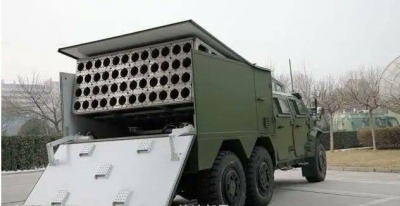profile/3143E05F14B1-53C4-4524-94AE-AD6376088FD2.jpeg
Ambassador001

TONY ELUMELU GRANT FOR YOUNG AFRICA ENTREPRENEURS
~18.9 mins read
profile/3143E05F14B1-53C4-4524-94AE-AD6376088FD2.jpeg
Ambassador001

CHINA TESTED WORLD FIRST SUICIDE SWARM DRONE
~2.7 mins read
China has a suicide drone filled with explosives that can loiter over the battlefield and hunt for targets, and a defense firm recently test-launched a swarm of them out of the back of a truck.
China Academy of Electronics and Information Technology, a subsidiary of the Chinese state-owned China Electronics Technology Group Corporation, has released a video of a test conducted in September, during which a Chinese light tactical vehicle launched a swarm of loitering munitions, commonly known as suicide or kamikaze drones.
The video of the test, which was first reported by The War Zone , also showed drones being deployed from a helicopter.
The launcher on the truck has a total of 48 cells, suggesting that a single truck could launch dozens of loitering munitions, which fill the gap between cruise missiles and more unmanned combat aerial vehicles.
Loitering munitions are fitted with extendable wings and a camera and carry high-explosive warheads that can linger over an area while an operator searches for potential targets.
It is unclear exactly what type of drone was used in the test, but it is reminiscent of the 20-pound CH-901 suicide drone, China's first tactical attack drone.
This heavy loitering munition, which was unveiled about four years ago, can be used against personnel, light vehicles, and potentially enemy armor. The CH-901 is similar to the Switchblade, a US system that was first unveiled in 2011 and has been used in combat, although the Chinese drone is much heavier.
The CH-901, which may or may not have been the weapon recently test-fired en masse, can spend two hours in the air and fly at speeds just under 100 mph, the South China Morning Post reported .
Toward the end of the CAEIT video, a swarm of at least 11 drones can be seen flying together. An operator equipped with a tablet, which appears to be the command interface platform, selects several targets for the drones to engage.
It is not clear whether this system has already been deployed with the People's Liberation Army. Chinese military insiders told SCMP that China is still trying to overcome various technical issues, such as slow-to-react artificial intelligence and the need for mor effective counter-jamming capabilities.
China has made great strides in the area of swarming drones in recent years. Not only did CAEIT set a record by operating 200 fixed-wing drones at once two years ago, but China has, on more than one occasion, demonstrated large swarm operations with standard quadcopters.
China is not alone, though, in its pursuit of swarm drone capabilities.
The Office of Naval Research has been developing multi-tube launchers for Coyote drones as part of its Low-Cost UAV Swarming Technology (LOCUST) program, which the Navy first demonstrated in 2015. The drones can be launched from both ground- and ship-based cells.
Other military outfits are also looking at various swarm capabilities. For example, one Defense Advanced Research Projects Agency (DARPA) program explored launching dozens of recoverable Gremlin drones from a C-130 Hercules.
Militaries are interested in swarming drones because they offer a lot of capability, be it reconnaissance, communications jamming, or kinetic strike, and potential defenses against these combat systems are insufficient, disproportionately expensive or still very immature.
Advertisement

Link socials
Matches
Loading...
